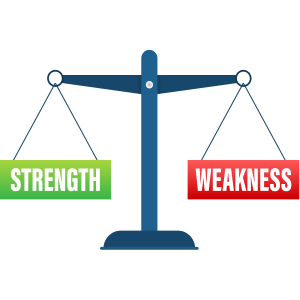Competitor Analysis: A Complete Guide

Competitor analysis is all about studying other companies that offer similar products or services as you do. This analysis gives you a good look at what others are doing well and what they could do bette. Why should you do competitor analysis? Simple: it helps you make better decisions. By understanding the competition, you can find ways to improve your products, reach more customers, and increase your sales.In this guide, we will go through every step of competitor analysis in easy language. We’ll also talk about different tools and tips that can make your analysis more effective. Let’s get started!
Competitor analysis is the process of identifying and studying businesses that sell products or services like yours. You look at their strengths, weaknesses, marketing tactics, and prices. This information helps you figure out what customers want and how you can meet those needs in a unique way.


1.Improving Your Product or Service: When you know what others are offering, you can see where you might improve. Maybe your competitor has a feature that customers love. You may consider adding something like it.
2.Understanding Customer Needs: By looking at your competitors, you learn what customers expect. This helps you provide what people want.
3.Building Strong Marketing Plans: Competitor analysis shows you how other businesses attract
4.Finding Your Unique Selling Point (USP): This is what makes you different. Competitor analysis helps you find your USP by showing what others are missing or lacking.
5.Keeping Up with Trends: Markets change fast. Competitor analysis keeps you updated on trends so you can adapt quickly customers. You can learn from their ads, social media, and website design.
Types of Competitors
1.Direct Competitors: A direct competitor is a business that supplies the same goods or services as you. For example, if you sell online clothes, other online clothing stores are your direct competitors.
2.Indirect Competitor: Indirect competitors sell products that aren’t the same but meet similar needs. For instance, a sandwich shop might have an indirect competitor in a salad bar. Both serve food, but they are different types.
3.Replacement Competitors :Replacement competitors offer different solutions to the same problem. For example, if you sell coffee, tea brands could be a replacement competitor.

Steps to Perform Competitor Analysis
Let’s go through the steps of doing competitor analysis. Each step will help you gather useful information to improve your business.
Step 1: Identify Your Competitors
Start by finding out which companies are in the same market as you. Start with a simple online search. Type in keywords that describe your business. You should find a list of companies that are similar to yours.You can also check social media and review sites like Google or Yelp. Look for businesses with products or services that could attract the same customers as you.


Step 2: Study Competitor Products or Services
Once you know your competitors, look closely at what they offer. Pay attention to:
- Product Features: What makes their product special? Are there features that customers love?
- Quality: Are customers happy with the quality?
- Price: How much do they charge? Is their product cheaper or more expensive than yours?
This step helps you see what you could add or change in your own product to make it better.
Step 3: Analyze Competitor Marketing Strategies
Marketing is how businesses attract customers. By studying your competitors’ marketing, you can learn what works well and what doesn’t. Look at:
- Social Media: Are they active on platforms like Instagram, Facebook, or Twitter? What types of posts get the most likes or comments?
- Website: Check their website’s design. Is it easy to use? Is there a place for a blog or news updates on their website?
- Ads: Are they running ads? Look for ads on Google or social media.
Try to understand what customers like about their marketing. You can use these ideas in your own marketing strategy.


Step 4: Assess Competitor Strengths and Weaknesses
This step helps you see where your competitors succeed and where they struggle. Some areas to consider are:
- Customer Service: Do they respond to reviews or questions online? Are customers happy with their service?
- Product Variety: Do they offer many options, or just a few?
- Location and Reach: Are they local, national, or international? This can show how big or small their market is.
By understanding these strengths and weaknesses, you can see where you might have an advantage
Tools for Competitor Analysis
Free Tools –
1. Google Alerts: Google Alerts lets you set up notifications for your competitors. If there’s any news about them, you get an email.
2. Social Media : Check competitors’ social media pages. You can see how they engage with their followers.
3. Review Sites : Sites like Yelp and Google Reviews can show you customer opinions about competitors.


Paid Tools –
1. SEMrush: SEMrush provides detailed information on competitor keywords, ads, and traffic sources.
2. Ahrefs: Ahrefs is great for studying competitor backlinks, keywords, and top-performing content.
3. SpyFu: SpyFu shows competitors’ Google Ads spending, keywords, and rankings.
Using these tools can save you time and give you accurate data.
Competitor Analysis
Benefits of Competitor Analysis
1. Improves Your Product or Service: By studying competitors, you learn what works. This helps you improve your own offerings.
2. Boosts Your Marketing: Understanding how competitors reach customers can improve your marketing. You can use their successful ideas in your campaigns.
3. Helps with Pricing Decisions: Competitor pricing can guide you to set fair, competitive prices.
4. Provides Customer Insights: By reading reviews, you understand what customers like and dislike. This supports you in making wiser decisions for your business.


Tips for Effective Competitor Analysis
1. Set Clear Goal: Determine what you want to discover before you begin. This helps you focus your research.
2. Track Key Metrics: Focus on key metrics like sales, market share, and social media engagement. Tracking these makes it easier to compare your performance with competitors.
3. Update Your Analysis Regularly : Markets change, and so do competitors. Keep your analysis current by updating it on a regular basis.
Want to Outrank Your Competitors?
ITLizard’s Competitor Analysis Service gives you the edge to beat your rivals and grow faster!
What You Get:
✔ Competitor Identification – Find your top competitors & analyze their strengths
✔ SEO Breakdown – See what keywords & backlinks bring them traffic
✔ Website Performance Audit – Discover their site speed, UX, and conversion strategies
✔ Social Media Insights – Learn how they engage and attract followers
✔ Content Strategy Analysis – Understand their best-performing blogs & posts
✔ Paid Ads & PPC Review – See their ad strategy and budget trends
✔ Strengths & Weaknesses Report – Find their gaps and turn them into your advantage
✔ Custom Strategy Recommendations – Get expert advice to outrank them
💡 Stay Ahead of the Competition – Grow Smarter & Faster!
Want to dominate your industry? Contact ITLizard today! 🔥




